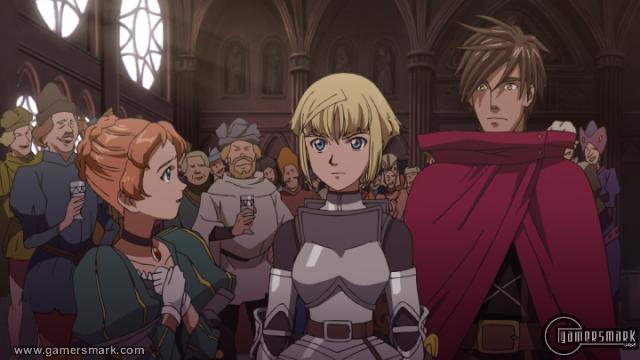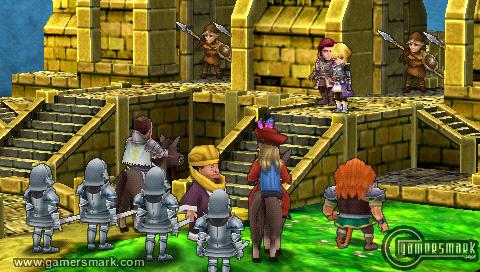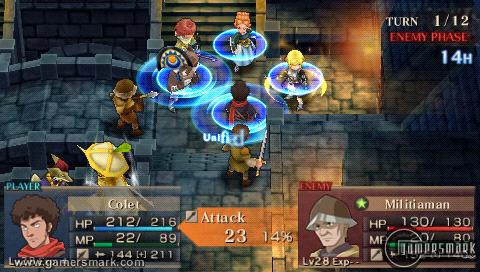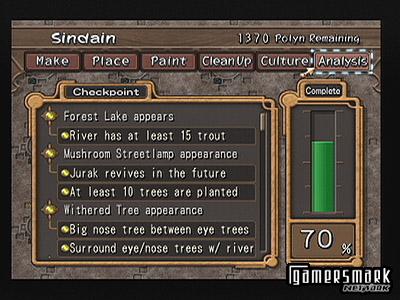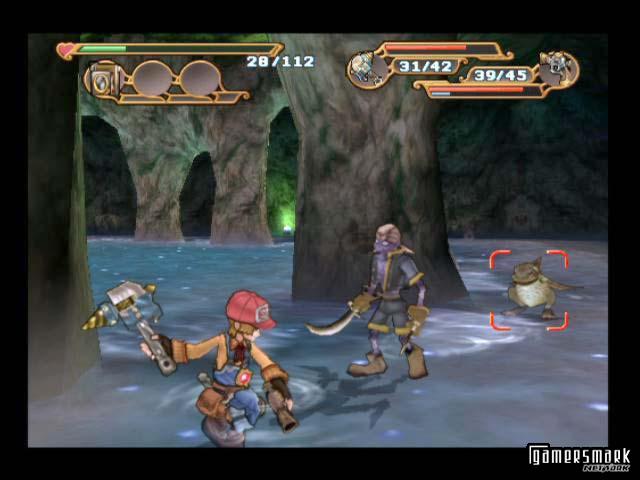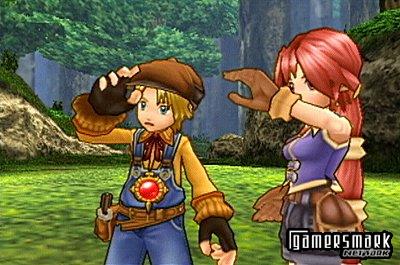Developer: Level 5 / Publisher: Sony Computer Entertainment || Overall: 9.0/10
Traditional strategy RPG games were epitomized by the original Final Fantasy Tactics – it’s become my own personal bar for comparing against new games in the genre. Not every strategy game is totally comparable, but when a game comes along that can be, it has a lot to accomplish before it can be considered a worthy play. Jeanne D’Arc is one of those rare games that capture a piece of what made Final Fantasy Tactics such a great strategy RPG.
One of the most important parts of any RPG is, of course, the story. Jeanne D’Arc is a fantasy-based retelling of the old story of Joan of Arc. In case you don’t know who she is, Joan of Arc was the savior of the Hundred Years War between Great Britain and France. Joan of Arc was believed to be a divine messenger of God, fighting for the preservation of France. With some additional characters that have their own smaller stories, you’ll basically go around and battle against the British and the monsters they control. This may or may not rub you in the wrong way, however. Personally, I find it kind of hokey that you are fighting the British. Granted, it is within the context of the story they are trying to tell, I just find it sort of silly, since they’re not exactly the most evil antagonists ever constructed in a video game. There’s also the awkward placement of talking Furries (such as Lion-men) that add to the fantasy element of the game, but clashes with the apparent historical accuracy of the game.
Many of the story scenes are displayed through anime videos. The anime videos are high quality and have great production values. When compared to in-game moments, these cinemas make the story. They are interesting to watch and feel like an 80s cartoon, rather than a traditional anime you’d see on TV today. The videos will also be the only time you’ll hear voice acting. The lack of voice acting hurts the rest of the game, and effecting your immersion in the storyline.
Despite flaws in the story, the gameplay is solid. This is perhaps the most polished strategy game on the PSP. Jeanne D’Arc will be a pleasant game to moderate to casual strategy gamers, but gamers that play lots of strategy games may find less to be impressed with. However, as always, it depends on what you’re looking for. For those looking for a simpler strategy game, Jeanne D’Arc will be perfect; for someone who enjoys more options (read: lots of menus) and complexity in their strategy games, it will probably be underwhelming. Even so, almost any type of strategy gamer will be finding enjoyment at some level in this title since it’s so well designed.
The most unique element of the gameplay is the Transformations certain characters use to power-up. When a character attains a certain amount of Spirit Power (SP) charge they will be able to transform into a divine knight that has a great amount of power, at which point they’ll easily plow through your foes. Defeating an enemy when transformed allows you to take an extra turn. Theoretically, you could keep taking turns forever, as long as you are able to defeat an enemy during each turn. Characters will be transformed for a certain amount of turns, so you’ll have to plan accordingly. Also, you can only transform once per battle (per gem), so you’ll have to make sure you use that power strategically.
Besides all the normal aspects of a strategy game, Jeanne D’Arc has other quirks as well. Power-ups called Burning Auras will appear one square behind an enemy you strike with a non-ranged weapon. What this basically means, is if you gang up on one enemy, each character will be able to utilize the Burning Aura to inflict major pain on your enemy. Another is Unified Guard. Unified Guard is used automatically when you have more than one ally grouped near another ally, and ups the attacked ally’s defensive stats for that action. Supposedly Unified Guard is supposed to help you, but I have not found much of a difference between not having it used and having it used. Either way, you can’t turn it off. The number of units you can have on screen at one time ranges from 4 to 7 or so, depending on the situation. Enemies can appear up to 10 or so on screen at the same time, as well.
Equipment management is a simple process. Each character has their own class of armor or weapons that they can equip, and as long as you have enough money for them, you can buy it and equip them. Shields can be equipped to any character that doesn’t use a two-handed weapon. Skills can be equipped as long as a character has an empty slot for them. They can easily be switched out between battles, and you can have up to 8 slots for skills. If you equip skills in an effective way, you’ll be able to get yourself out of tight situations more often. Skill stones (the items which hold skills) require a character to be at a certain level before they can be equipped, however. Skill stones can be sold for money as well, which helps in buying other equipment you may need. Excess skill stones can also be combined to create new skill stones by “binding” them. Binding skill stones allows you to “create” skills using two skill stones, and once you’ve found the recipe to creating that skill, you’ll always know the outcome (if you’ve done it once already) of binding two skill stones.
The game looks about as good as a PS2 game should, which is quite a feat considering it’s on the PSP. The PSP’s screen allows for wide view of the battlefield, and the resolution helps in the presentation quality of the cel-shading. The audio is also top notch, but the lack of voice acting in anything except the anime movies is a disappointing omission, at least as far as I’m concerned.
With around 40 stages, you’ll probably sink quite a bit of time into this game –
you’ll get your money’s worth and then some. Most of the stages will be in unique areas, in addition to there being a few “free stages” for you to level up at during the course of the game.
Jeanne D’Arc is a great little strategy game. Although the real-world historical aspects of the game come out a little corny in the context of the game, it doesn’t stop it from being a solid strategy game experience that will satiate PSP strategy gamers. Jeanne D’Arc is a good PSP game to have if you’re trapped under the death grip of boredom, especially at the lower-than-usual price of $29.99.

